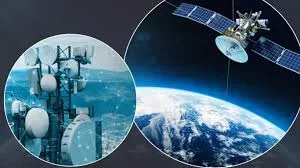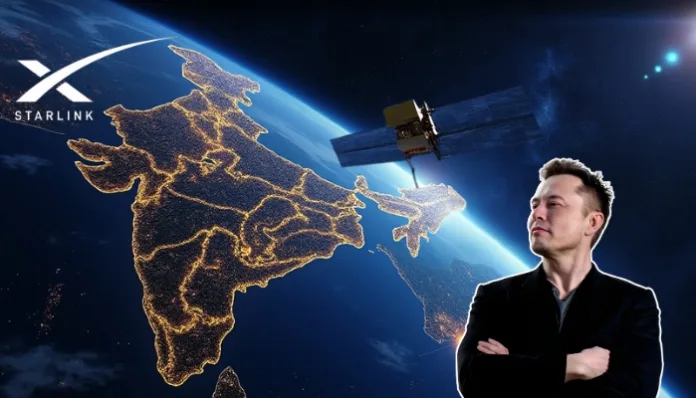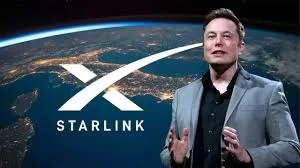India’s internet landscape is about to witness a seismic shift as Elon Musk’s Starlink has received authorization to operate satellite broadband, marking a milestone in expanding internet connectivity with the low Earth orbit network. This approval comes after years of regulatory hurdles and promises to transform connectivity in rural and remote areas across the country.
Table of Contents
Starlink Key Approval Details
| Aspect | Details |
|---|---|
| Regulatory Status | Final approval from IN-SPACe received |
| Service Launch | Expected Q4 2025 |
| Monthly Plans | Starting at ₹3,000 |
| Setup Cost | ₹33,000 (one-time) |
| Bandwidth | 600-700 Gbps capacity |
| Coverage | Rural and remote areas priority |
| Competitors | OneWeb, Reliance Jio Satellite |
The Regulatory Journey
Elon Musk’s Starlink has received anticipated state approval in India, opening the door to enter the world’s second-biggest internet market after China. The approval process involved multiple agencies including the Department of Telecommunications (DoT), Telecom Regulatory Authority of India (TRAI), and IN-SPACe, with a strong focus on internal security and data sovereignty.

Pricing and Service Details
Starlink plans to deliver 600–700 Gbps of bandwidth through its low-Earth orbit (LEO) satellite constellation, targeting rural and remote areas where conventional fibre and mobile networks remain limited or unreliable. The service will be priced at approximately ₹3,000 per month, with a substantial one-time setup cost of ₹33,000.
Strategic Market Entry
The Department of Telecommunications (DoT) is set to grant trial spectrum to the US-based space firm to complete security compliance demonstrations. This trial phase will be crucial for demonstrating Starlink’s technical capabilities and security compliance before full commercial rollout.
Competition in India’s Satellite Market
Starlink enters a competitive landscape where OneWeb and Reliance Jio are already positioning themselves in the satellite broadband space. Strategic partnerships have emerged with Bharti Airtel and Jio having signed agreements with SpaceX, contingent on regulatory approvals.
Revenue and Regulatory Framework
TRAI had recommended that the DoT levy a 4% charge on a satcom company’s adjusted gross revenue (AGR), with satcom companies serving urban areas paying ₹500 per connection. However, the DoT is anticipated to shortly finalize regulations and pricing for satellite spectrum allocation based on new suggestions from TRAI.

Target Market and Use Cases
Rural Connectivity:
- Remote villages with no fiber infrastructure
- Agricultural areas requiring IoT connectivity
- Disaster-prone regions needing backup internet
Commercial Applications:
- Maritime and aviation industries
- Mining and oil exploration sites
- Government and defense applications
Consumer Benefits:
- High-speed internet in underserved areas
- Low-latency connections for real-time applications
- Backup connectivity for urban areas
Technical Advantages
Starlink is a satellite-based broadband internet system developed by SpaceX that aims to provide high-speed, low-latency internet globally, especially in rural and remote regions. The LEO constellation offers significant advantages over traditional geostationary satellites, including:
- Lower latency (20-40ms vs 600ms)
- Higher bandwidth capacity
- Better coverage in remote areas
- Reduced weather interference
Market Impact and Digital Divide
The approval represents a significant step toward bridging India’s digital divide. With over 40% of India’s population still lacking reliable internet access, satellite broadband could be transformative for:
- Education: Enabling online learning in remote schools
- Healthcare: Telemedicine services in rural areas
- Business: E-commerce and digital services expansion
- Government: Digital India initiatives reach
Challenges Ahead
Regulatory Compliance:
- Data localization requirements
- Security clearance processes
- Spectrum allocation finalization
Market Challenges:
- High initial setup costs
- Competition from fiber and 5G networks
- Pricing sensitivity in the Indian market
Industry Response
Domestic telecom operators have expressed mixed reactions, with some viewing satellite broadband as complementary to terrestrial networks, while others see it as direct competition. The government’s approach suggests a balanced perspective, recognizing the need for multiple connectivity solutions.
Future Outlook
With final approval secured, Starlink’s entry into India could accelerate digital transformation in rural areas and provide crucial backup connectivity for urban regions. The success will largely depend on pricing strategy, service quality, and regulatory compliance execution.
For comprehensive coverage of India’s evolving telecom landscape and technology updates, visit TechnoSports and explore our Technology News section.
Stay updated on India’s satellite broadband developments and telecom policy changes at TechnoSports, your trusted source for Telecom Industry News.
Frequently Asked Questions
Q: When will Starlink services be available to consumers in India?
A: While Starlink has received final approval from IN-SPACe, the commercial launch is expected in Q4 2025. The Department of Telecommunications (DoT) is still finalizing spectrum allocation regulations and pricing. The company will need to complete security compliance demonstrations and obtain trial spectrum before full commercial rollout begins.
Q: How much will Starlink cost in India compared to existing broadband options?
A: Starlink plans to charge approximately ₹3,000 per month with a one-time setup cost of ₹33,000. This is significantly higher than traditional broadband options, which typically range from ₹500-2,000 monthly. However, the pricing targets rural and remote areas where conventional broadband is either unavailable or unreliable, making it a premium service for underserved markets.








